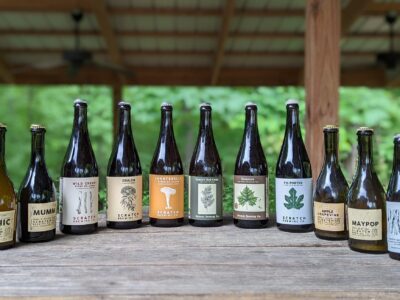Greg Johnston had two clearly defined objectives in mind when he launched Flathead Lake Brewing Company (FLBC) in Woods Bay, Montana, in 2004: (1) make the best beer ever and (2) have fun doing it. The brewery’s first site is directly next to its namesake, Flathead Lake, which is the largest natural body of freshwater by surface area in the western United States and one of the cleanest lakes in the world.
Although the first of Greg’s goals was and still remains inherently impossible to measure or quantify objectively, the brewery took only two years after opening for the brewery to make a name for itself in the craft beer industry.
In 2006, FLBC became the youngest brewery to win not one but two awards at the biannual World Beer Cup, developed by the Brewers Association and started in 1996. The upstart brewery won silver in the American-Style Stout category for its Mutiny (now called 369′ Stout) and bronze in the Robust Porter category for its Peg Leg (now called Painted Rock Porter) at the “The Olympics of Beer Competitions.”
Greg’s daughter, Sandy Johnston, joined as a general manager in 2010 and began helping the team turn the brewery’s Woods Bay taproom into a pubhouse, setting the stage for FLBC to become one of the most sustainable breweries in Montana over the next decade.
After remodeling and renovating the pub house, growing demand required the brewery to expand its production capacity around 2012. Instead of looking at potential production facility sites outside of its community, FLBC looked inwards, which took the company to a rather peculiar destination: a vacant bowling alley in Bigfork.
Photo Courtesy Flathead Lake Brewing Co.
Treating A Bowling Alley Like Bison
When the Indigenous communities that once roamed much of North America successfully completed a bison hunt, they would not just take the meat but every possible part of the animal they could — the bones, cartilage, fat, and hide. The Plains Indians, for example, had more than 150 different uses for bison parts, like making tools from the horns, teepees from the hide, and water containers from the bladder.
Over the past several decades, most of the vast plains where massive herds of bison once roamed have traded soil for cement and grassy fields for gated communities. However, one concept that has survived this inevitable passage of time is never to let anything go to waste, finding new uses for old things — just like the bison.
There are no indications that FLBC plans to produce a bison-based craft beer or anything along those lines, but its renovation and remodeling of the old bowling alley it turned into a production facility represent a modern-day approach to the age-old idea of repurposing and minimizing waste (with some obvious differences, of course).
Photo Courtesy Flathead Lake Brewing Co.
The old bowling building had no stormwater infrastructure, allowing potentially harmful run-off to stream into Flathead Lake. The new roofs and parking lot were designed to alleviate this issue by collecting more stormwater and cleaning it through an aquifer.
The majority of the sustainable initiatives were related to the demolition process, specifically the sorting and repurposing of materials and resources. Waste that would typically be sent to landfills was used to make 100% of the insulation for the new production facility. FLBC also donated usable windows, doors, ceiling tiles, and ductwork to Habitat for Humanity.
The brewery also offered crushed concrete and asphalt to local projects for clean fill and donated scrap steel to several community organizations, which then sold it for fundraising. The renovation took over two years to complete, though it was well worth the wait once the new production facility and brewery opened in 2015.
A Sustainable Future
The launch of Flathead Lake Brewing Company’s new facility coincided with its decision to begin sustainably packaging its beer in cans. In addition to being 100% recyclable, aluminum cans are also easier to travel with and require less energy to produce and ship than glass bottles.
The brewery has continued experimenting with and adopting several sustainable systems and technologies to improve its operations. JE Engineering designed multiple FLBC WaterFurnace heat pumps to run on renewable energy using local clean effluent (liquid waste) from the Bigfork Water and Sewer District. It also operates energy-efficient appliances via its “Effluent-Thermal” System, four solar rooftop collectors to heat kitchen water, and gives 100% of its spent grain to local farms for livestock feed.
Photo Courtesy Flathead Lake Brewing Co.
FLBC’s numerous sustainable and community-oriented systems and initiatives have not gone unnoticed. These efforts saw the company win the inaugural 2018 Montana Sustainabrew Award, presented to the most sustainable brewery in Montana and sponsored by the Montana Brewers Association, Montana Conservation Voters Education Fund, and Montana Renewable Energy Association. As for the future, FLBC is currently working to achieve a Leadership in Energy and Environmental Design (LEED) Certification for New Construction and Major Renovations at its Bigfork brewpub.
As for why FLBC is so committed to sustainability, the brewery explained it best in its announcement on winning the 2018 Sustainabrew Award: “Great beer calls for quality ingredients, and quality ingredients require a healthy environment.”





